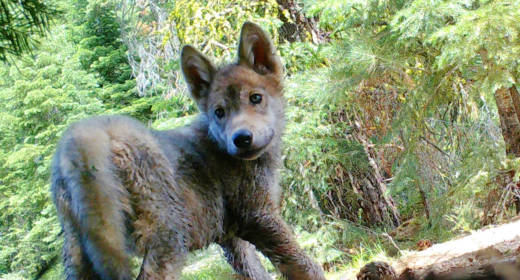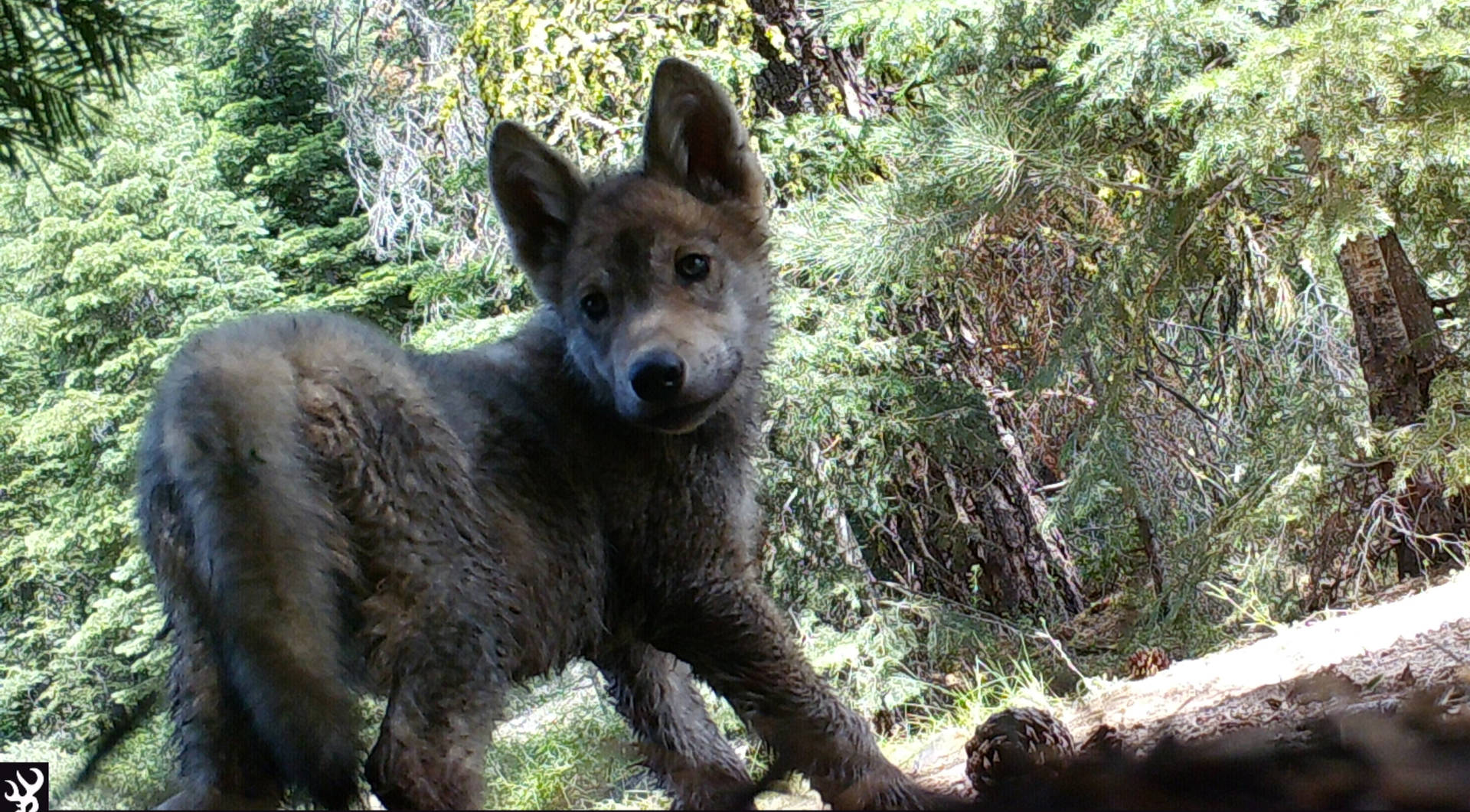A rare gray wolf couple new to California have mated, producing at least three pups this year, officials say, and establishing the second pack of the endangered species in the state.
State biologists made the discovery after capturing the female gray wolf in Lassen County in late June and fitting a tracking collar on her. They’d initially spotted her and her mate during the summer and fall of 2016, when remote trail cameras captured images of the pair traveling in the northeast part of the state, the California Department of Fish and Wildlife (CDFW) said.
There was no evidence the couple had produced pups at that time, but biologists doing a routine check on the female wolf in the field on July 1 found the "very small tracks" of what appeared to be wolf pups, Jordan Traverso, a CDFW spokeswoman, said Thursday. They then found that a nearby U.S. Forest Service trail camera had captured images of the pups playing close up.
"As it turns out they had been there -- right in front of the trail camera. It’s pretty fortuitous, and some of those pictures are absolutely just so cute of those pups," Traverso said.
"Some of them are looking right at the camera," she added.


